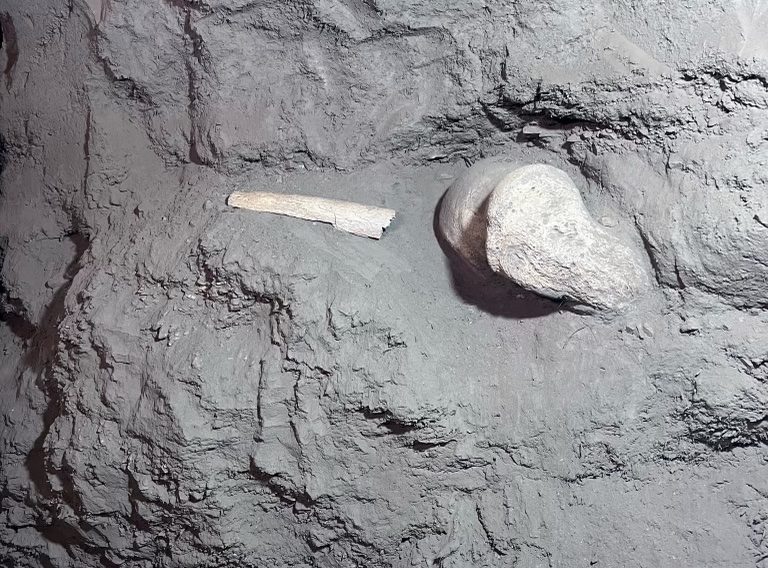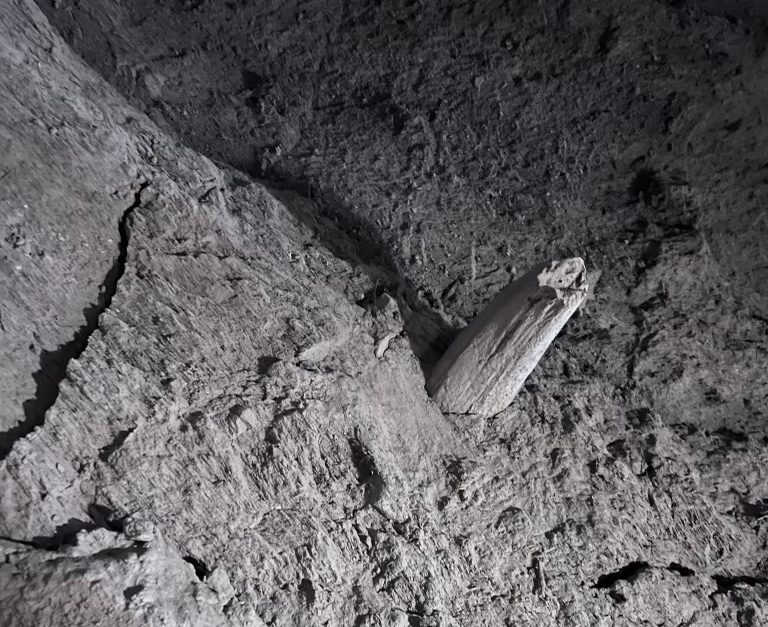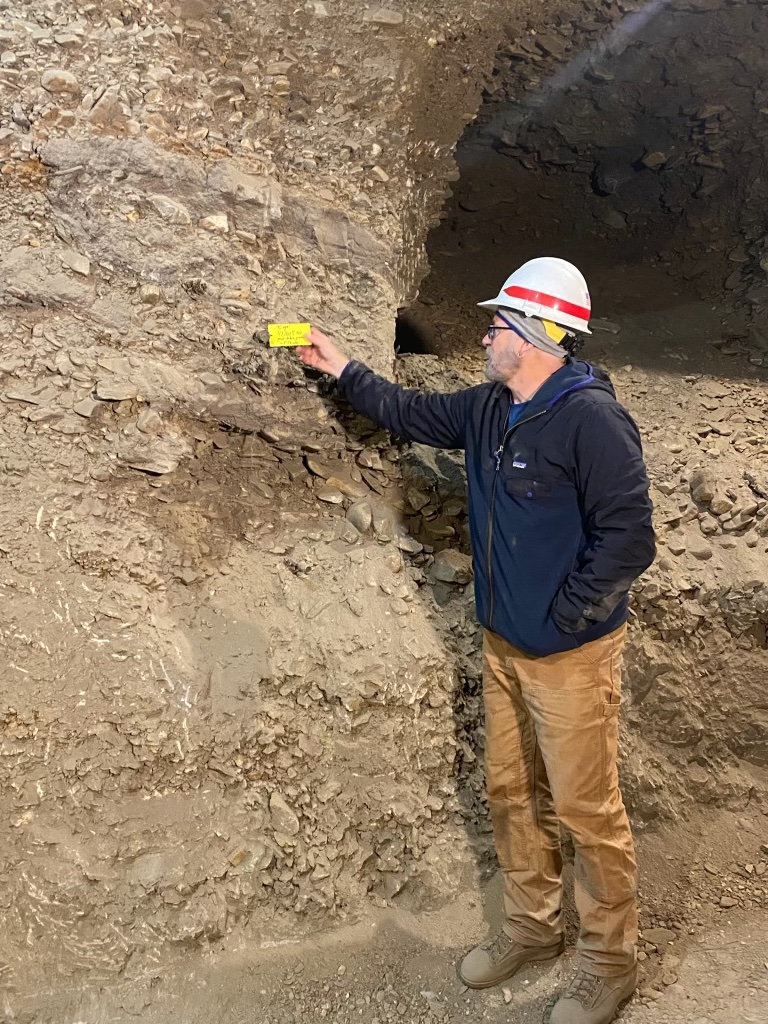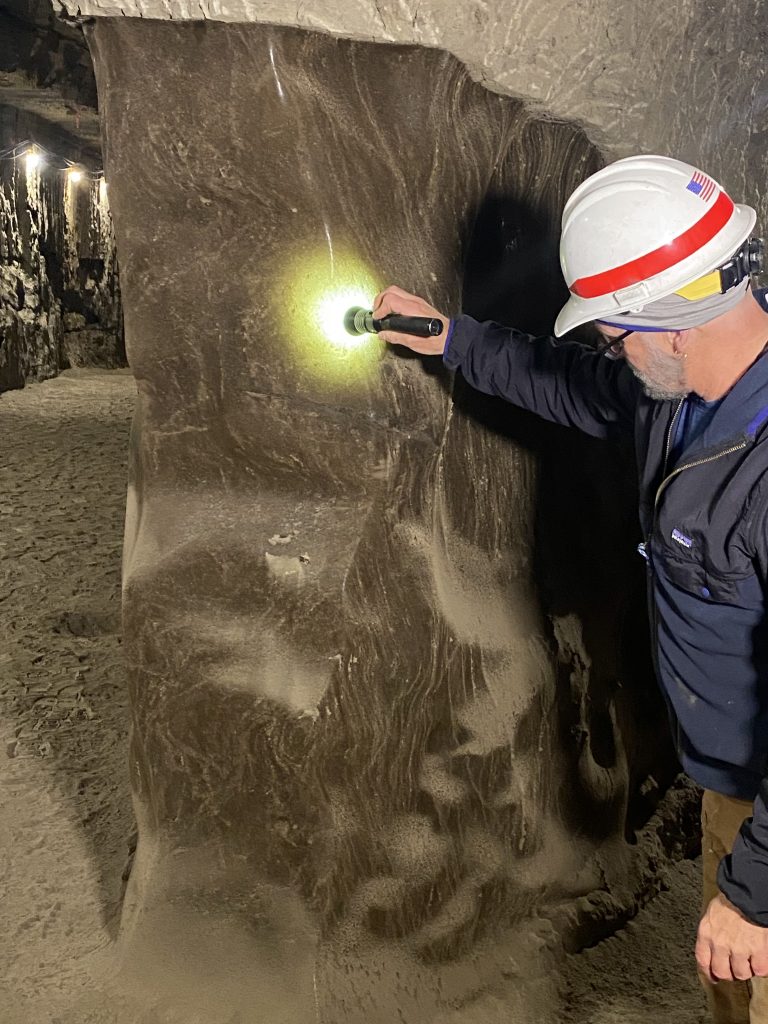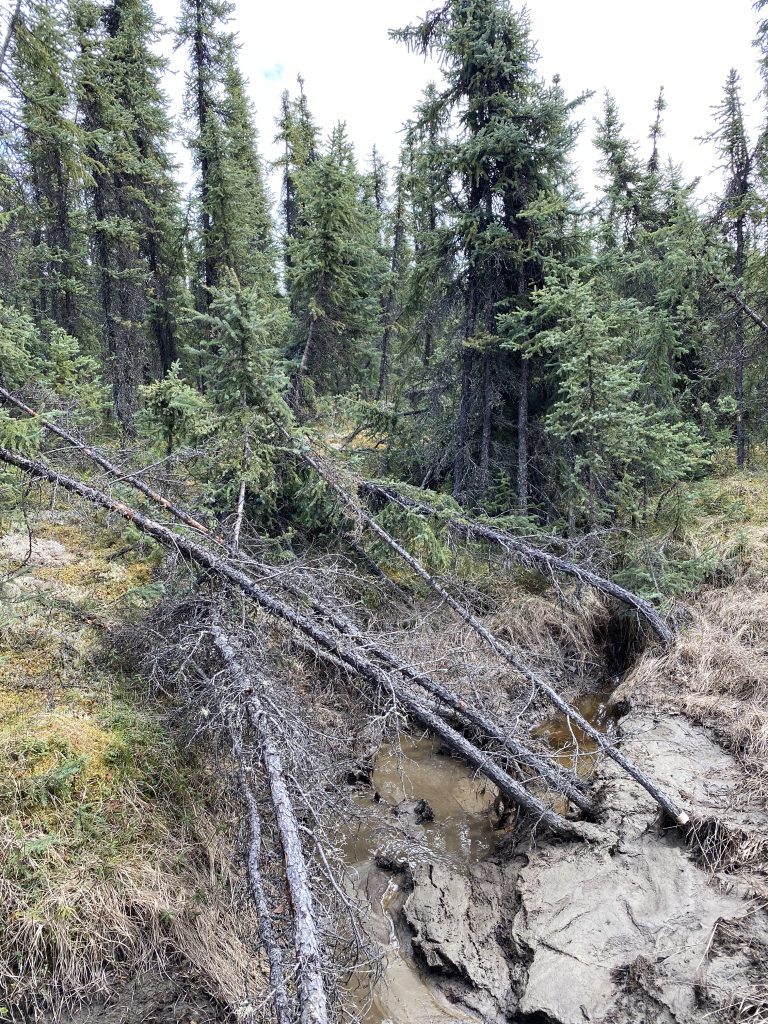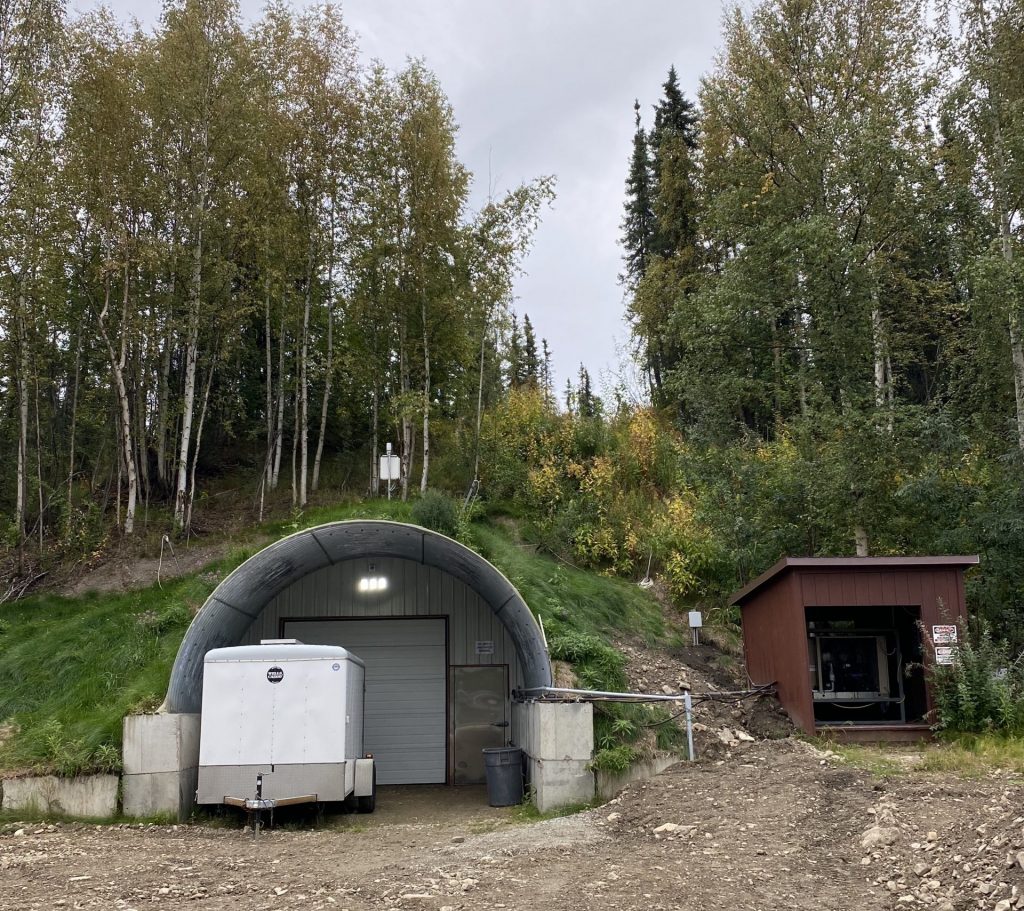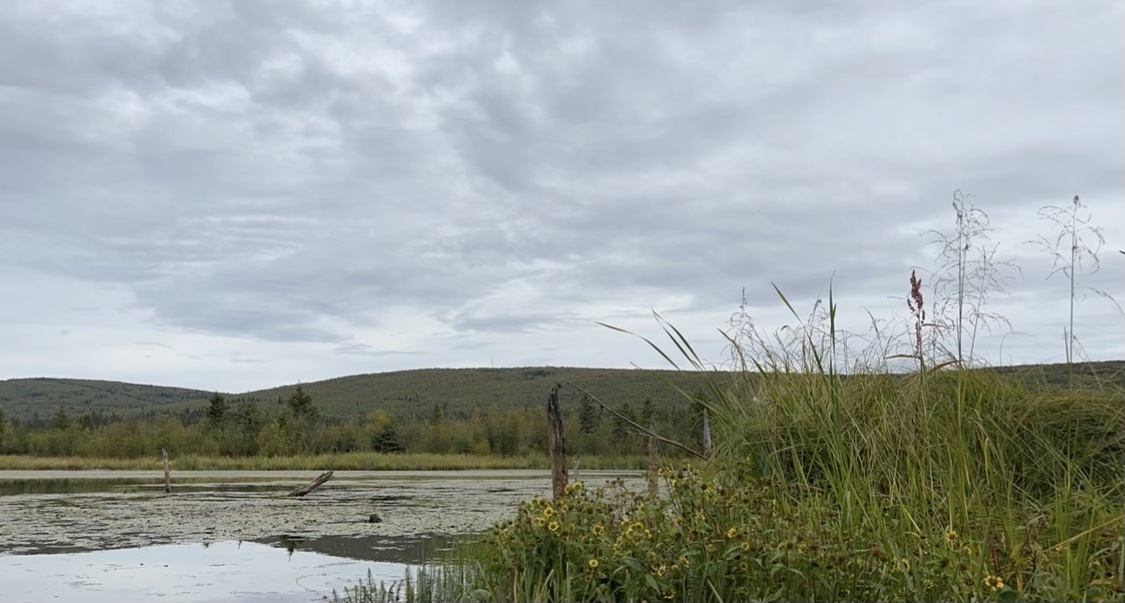
By Sofie Bates / FAIRBANKS, ALASKA /
“This lake wasn’t here 50 years ago.”
Katey Walter Anthony, an ecologist at the University of Alaska-Fairbanks, dips her paddle into the water as her kayak glides across the lake. “Years ago, the ground was about three meters taller and it was a spruce forest,” she says.
Big Trail Lake is a thermokarst lake, which means it formed due to permafrost thaw. Permafrost is ground that stays frozen year round; the permafrost in interior Alaska also has massive wedges of actual ice locked within the frozen ground. When that ice melts, the ground surface collapses and forms a sinkhole that can fill with water. Thus, a thermokarst lake is born.
Walter Anthony is a researcher collaborating with NASA’s Arctic Boreal Vulnerability Experiment (ABoVE) project. She’s studying the formation of these thermokarst lakes and how this process is caused by and contributes to Earth’s changing climate.
“Lakes like Big Trail are new, they’re young, and they are important because these lakes are what’s going to happen in the future,” she explained.
They’re also belching methane – a potent greenhouse gas – into the atmosphere.

Credit: NASA / Sofie Bates
At first glance, Big Trail looks like any lake. But look closer and there’s something disturbing the surface: bubbles.
Two things happen as the permafrost layer thaws beneath lakes: microbial activity increases and pathways form in the permafrost . At Big Trail Lake and other thermokarst lakes in the Arctic, microbes digest dead plants and other organic matter in the previously frozen soil in a process that produces carbon dioxide and methane. More rarely, permafrost thaw can form ‘chimneys’ under lakes that allow methane and other gases – previously trapped deep underground – to escape. This release of ‘geologic’ methane is happening at Esieh Lake, another of Katey Walter Anthony’s ABoVE study sites. In all thermokarst lakes, the gases bubble up to the lake surface and release into the atmosphere.
“At Big Trail Lake, it’s like opening your freezer door for the first time and giving all the food in your freezer to microbes to decompose. As they decompose it, they are belching out methane gas,” says Walter Anthony. She leans over and pushes her paddle into the spongy ground under the water, causing clusters of methane bubbles to erupt on the surface.
As the lake freezes in the winter, the bubbles can prevent ice from forming and create pockets of open water that continue emitting methane throughout the season. In other areas, the methane bubbles create frozen domes of ice on the surface of the lake.
“Once ice has formed on these lakes, the rising methane bubbles will freeze into the ice,” explains Franz Meyer, Chief Scientist at the Alaska Satellite Facility in Fairbanks. Meyer is also one of the chief scientists for NISAR, a joint NASA and ISRO satellite that will study our planet. One of the instruments that will be on NISAR is a radar similar to the instrument the ABoVE team is flying over Arctic and boreal regions to study the ground, ice and lakes below.
“These bubbles that we see in the ice change the way that the radar signal interacts with the ice surface,” he explains. The radar can detect roughness – like from frozen methane bubbles – on the surface of the land, ice and water below. Thermokarst lakes with a high roughness, or more bubbles, tend to have higher methane emissions compared to smooth lakes. Combining the airborne radar data with measurements collected in the field allows scientists to estimate how much methane lakes are emitting across a large region.
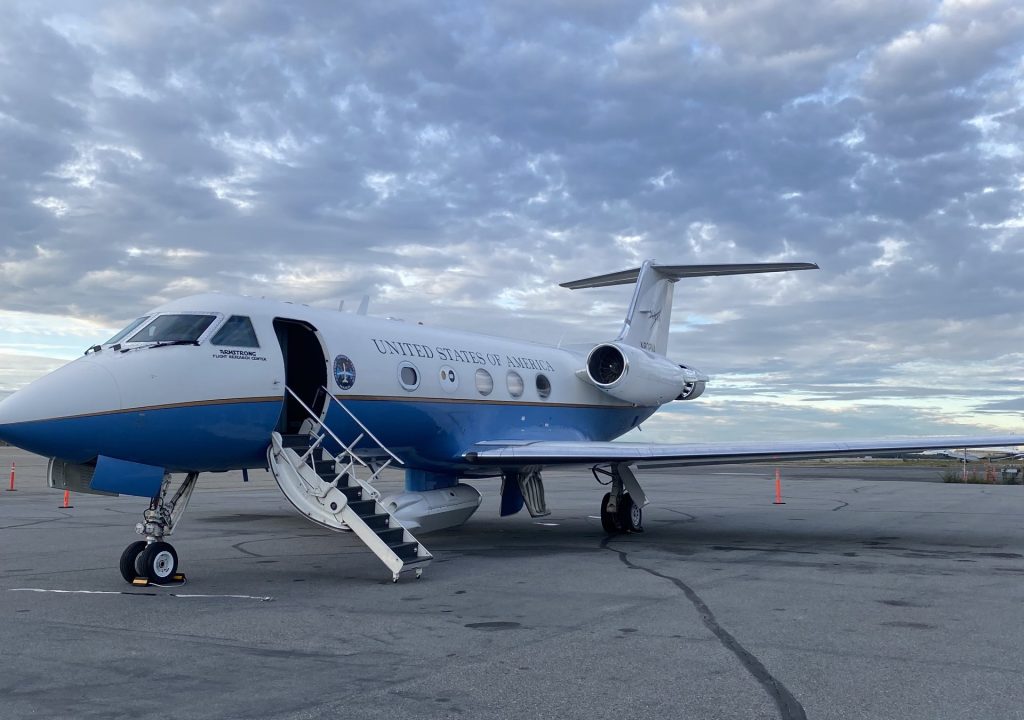
Credit: Sofie Bates / NASA
Walter Anthony says she has something to show us and paddles over to what looks like a piece of trash: an upside down plastic bottle sticking out of the water. It’s a methane collection device, she says, explaining that the bottle traps methane as it bubbles up through the water. Walter Anthony turns a valve and collects a sample of the gas in a smaller bottle, which her team will chemically analyze to determine the age and concentrations of the various gases within.
But there’s a faster way to know if the lake is releasing methane.
Walter Anthony opens the valve, lights a match, and holds it to the opening. A burst of flame ignites. She lets the flame burn for a few seconds and then turns off the valve. It’s like a more extreme version of lighting a gas stove.


Credit: NASA / Sofie Bates
There are millions of lakes in the Arctic, but only the newer ones are releasing high amounts of methane. That’s because most Arctic lakes are hundreds or thousands of years old. Those lakes used to be just like Big Trail Lake, but the microbes there have since run out of permafrost organic matter to decompose, and instead are emitting methane from more modern carbon sources. That means the older lakes are no longer emitting as much old methane.
“So what’s a concern for the future, when we think about permafrost carbon feedback, are areas that are newly thawed,” says Walter Anthony. Just like Big Trail Lake.


